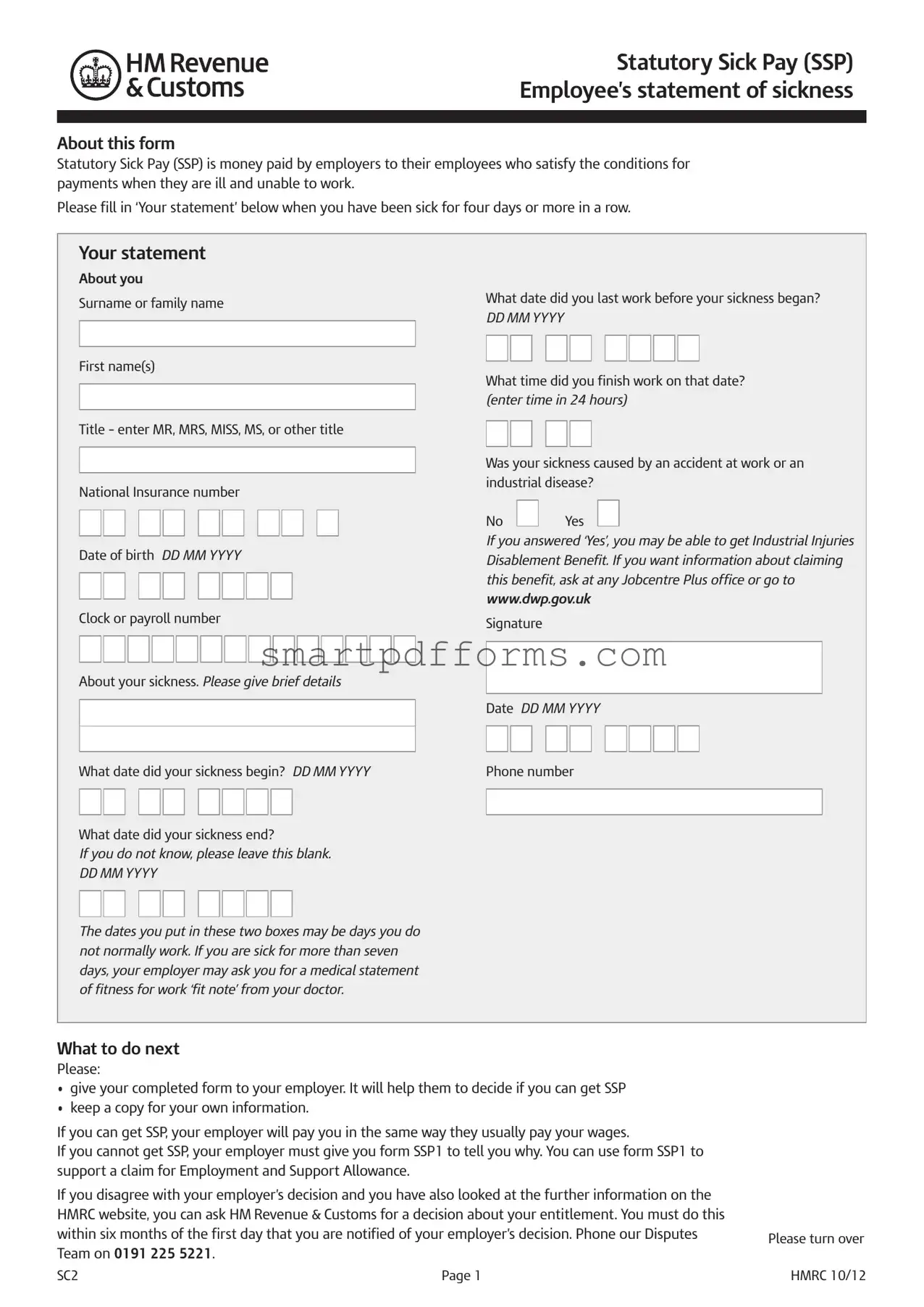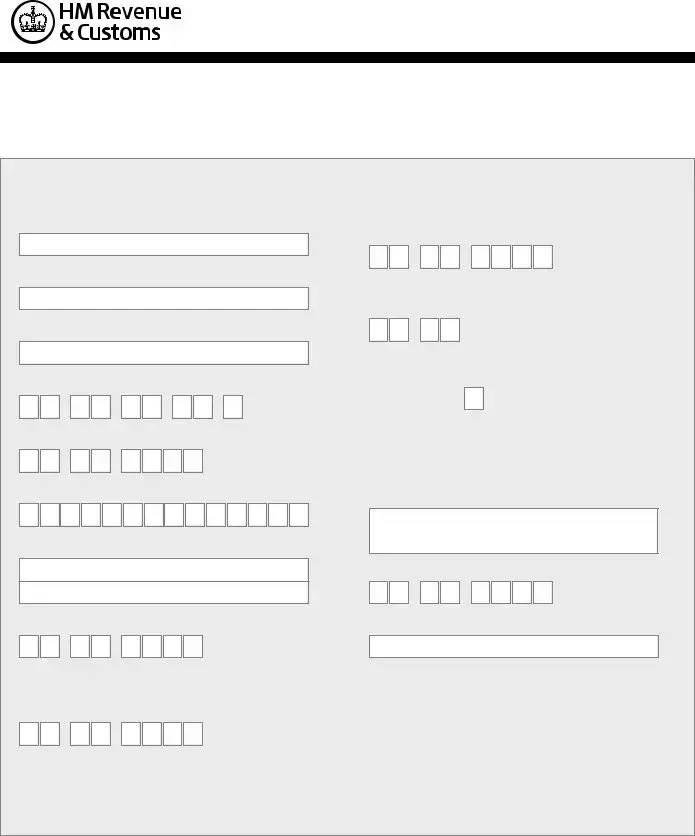Statutory Sick Pay (SSP)
Employee’s statement of sickness
About this form
Statutory Sick Pay (SSP) is money paid by employers to their employees who satisfy the conditions for payments when they are ill and unable to work.
Please fill in ‘Your statement’ below when you have been sick for four days or more in a row.
Your statement
About you
Surname or family name
First name(s)
Title – enter MR, MRS, MISS, MS, or other title
National Insurance number
Date of birth DD MM YYYY
Clock or payroll number
About your sickness. Please give brief details
What date did your sickness begin? DD MM YYYY
What date did your sickness end?
If you do not know, please leave this blank.
DD MM YYYY
The dates you put in these two boxes may be days you do not normally work. If you are sick for more than seven days, your employer may ask you for a medical statement of fitness for work ‘fit note’ from your doctor.
What date did you last work before your sickness began?
DD MM YYYY
What time did you finish work on that date? (enter time in 24 hours)
Was your sickness caused by an accident at work or an industrial disease?
If you answered ‘Yes’, you may be able to get Industrial Injuries Disablement Benefit. If you want information about claiming this benefit, ask at any Jobcentre Plus office or go to www.dwp.gov.uk
Signature
Date DD MM YYYY
Phone number
What to do next
Please:
•give your completed form to your employer. It will help them to decide if you can get SSP
•keep a copy for your own information.
If you can get SSP, your employer will pay you in the same way they usually pay your wages.
If you cannot get SSP, your employer must give you form SSP1 to tell you why. You can use form SSP1 to support a claim for Employment and Support Allowance.
If you disagree with your employer’s decision and you have also looked at the further information on the HMRC website, you can ask HM Revenue & Customs for a decision about your entitlement. You must do this
within six months of the first day that you are notified of your employer’s decision. Phone our DisputesPlease turn over Team on 0191 225 5221.
Other help while you are sick
•You can get more information about other help while you are sick in leaflet DWP1026 Help if you’re ill or disabled.
You can get leaflet DWP1026 from:
–any Jobcentre Plus office
–most advice centres like the Citizens Advice Bureau, or
–any post office (except in Northern Ireland), or
–go to www.dwp.gov.uk
•If you do not have much money coming in while you are sick, you may be able to get a Social Security benefit. You should contact any Jobcentre Plus office or, go to www.dwp.gov.uk
You can also phone the Benefit Enquiry Line for people with disabilities. The phone call is free. The number is 0800 882 200 or in Northern Ireland 0800 220 674.
If you have any problems with hearing or speaking and use a textphone, phone 0800 243 355. The phone call is free.
If you do not have your own textphone system, they are available to use at the Citizens Advice Bureau and main libraries.
•If you want to know more about SSP go to www.gov.uk
Penalties
We may charge penalties where a person, either fraudulently or negligently, gives incorrect information or makes a false statement or declaration for the purpose of claiming entitlement to Statutory Sick Pay.

